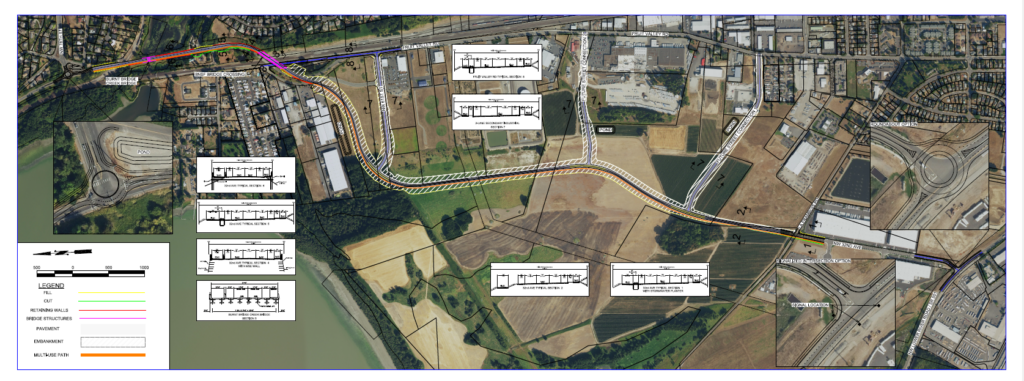32nd Avenue Extension Project

The NW 32nd Avenue Extension Project proposes improvements for a freight and intermodal corridor, moving freight traffic from local roads and constructing detached sidewalks, protected mobility lanes, and connections to existing trails.
The Project will provide a safe, efficient, and freight supportive facility to encourage economic development at the Port of Vancouver and divert freight traffic from neighborhood streets in Fruit Valley. The Project will reduce local and regional congestion, improve livability in the Fruit Valley neighborhood, and enhance access to the Port of Vancouver and nearby industrial areas.
Project Context
In Vancouver, travel time on I-5 southbound during morning peak hours increased 291 percent between 2011 and 2015, and average speeds have reduced from 31 mph to 8 mph.
As a result, traffic attempting to avoid highway slowdowns use Fruit Valley Road, a two-lane road that carries the highest traffic volume of any road on Vancouver’s Westside during morning rush hours.
Additional growth in the area will contribute to this traffic volume. More than 2,500 jobs are projected to be created by 2035 in the Port of Vancouver and adjacent industrial areas. One million square feet of new industrial development is currently under construction in the current 32nd Avenue corridor.
Developing efficient and reliable freight routes is an important component of the 2016 Westside Mobility Strategy for the City of Vancouver, and the 32nd Avenue Extension Project is key to achieving this mobility goal.
Project Benefits
- The 32nd Avenue Extension corridor from Lower River Road to 78th Street would provide a reliable and direct connection for commuters who work in the industrial areas and freight that needs to move to I-5.
- The roadway has the potential to catalyze new development of industrial lands north of Mill Plain Boulevard by providing efficient access to regional freight routes and bypassing arterials with high volumes of commuter traffic, such as Fruit Valley Road or Fourth Plain Boulevard.
- The new roadway will help to preserve livability and safety within Westside residential areas by drawing freight and commuter traffic away from arterials and local streets that run through those neighborhoods.
- The pedestrian and bike facilities constructed with the roadway and bridge can greatly enhance multi-modal safety and accessibility to local green space and recreation opportunities Vancouver Lake, Frenchman’s Bar and the Burnt Bridge Creek Trailhead.
Industrial Access Feasibility Study
In 2019, the City of Vancouver conducted a study to understand the feasibility of the proposed 32nd Avenue extension project. The feasibility study looked at the components needed to make this connection including roadway routes, bridges, trail connections, phasing, and potential funding. The project also evaluated the hydrology and geology to understand the complex area where a roadway could be built in the area.
The feasibility study explored:
- Potential roadway facilities, including number of travel lanes, lane and shoulder widths, presence of curbs and bridges.
- Public and private access to the extended road, including location, width and spacing between access points.
- Pedestrian facilities, including the potential locations and width of existing sidewalks, crosswalks, and pathways.
Bikeway facilities, including the location of bike lanes and shoulders.


